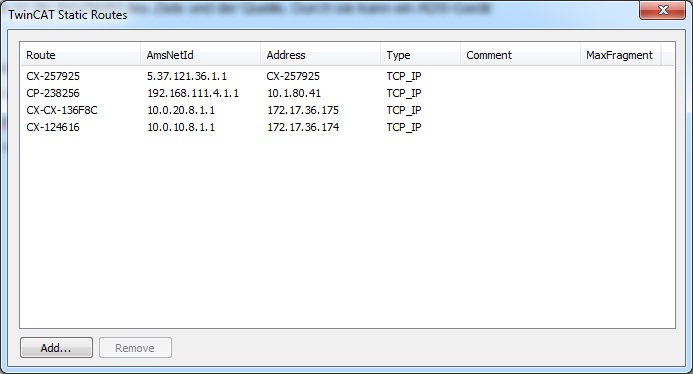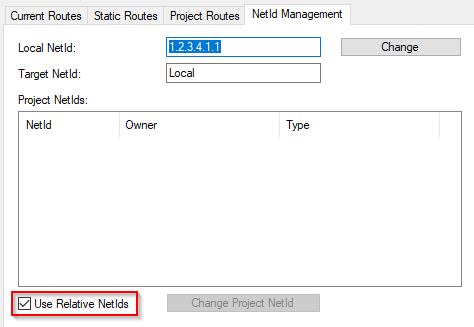Introduction
For a better understanding of the AmsNAT function it is important to know the difference between ADS and AMS and to know what an ADS route is.
ADS (Automation Device Specification) is the TwinCAT communication protocol that specifies the interaction between two ADS devices. For example, it defines what operations can be executed on another ADS device, what parameters are necessary for that and what return value is sent after execution.
AMS (Automation Message Specification) specifies the exchange of the ADS data. A major component of the communication protocol is the AmsNetId. This is specified in the AMS/ADS package for the source and target device. An ADS device can be explicitly addressed using the AmsNetId.
A route between two devices must be setup in TwinCAT so that they can communicate. This route is configured on both sides and typically contains the route name, the AmsNetId and the address of the communication partner as well as the type of connection. The configuration of new routes and an overview of existing routes in a TwinCAT system are shown in the following figure.

If the hardware should be scanned on the target, relative NetIDs have to be used:
